Will AI Replace Analysts? The Evolving Nature of the Role in the Agentic Era
%20(3).jpg)
AI is transforming the analyst role at breakneck speed. Tasks that once consumed hours—data prep, root cause analysis, storytelling—can now be delegated to AI in minutes. But does this mean analysts are becoming obsolete? Not quite. We’re seeing the rise of the AI Analyst Paradox: while AI is devaluing traditional analytical work, it’s simultaneously unlocking a more strategic, high-leverage future for analysts willing to evolve.
T-Shaped Analysts Must Evolve to AI-Native Analysts
Traditionally, companies have hired “T-shaped” analysts with a breadth of data & analytics skills and a specific functional or domain expertise. But AI is upending this. When fundamental skills like data prep, EDA, exploration, and data storytelling become increasingly augmented by AI, every analyst is upleveling and it’s the critical thinking, connecting dots creatively, and psychology of understanding and communication with stakeholders that is the new/old super power.
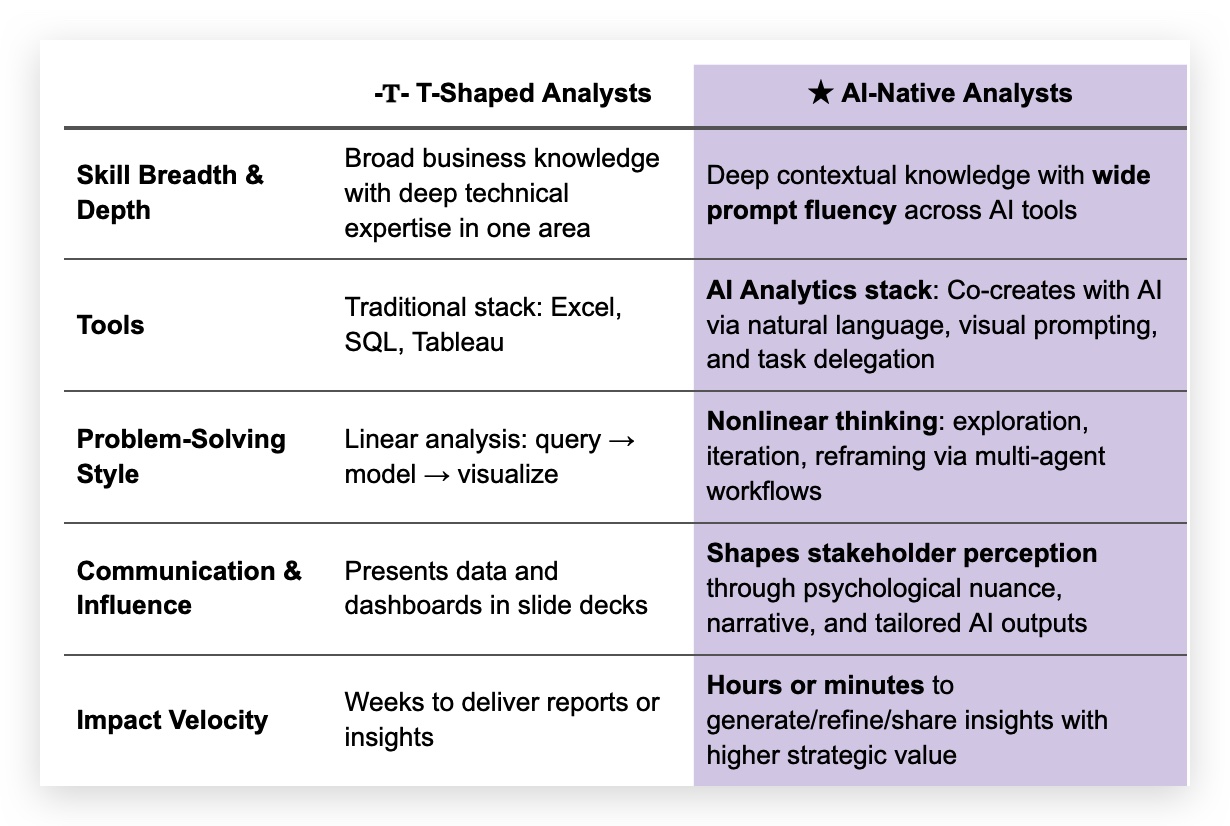
Old-school analysts are buried in spreadsheets and pivot tables, concerned with routine tasks like report generation, data cleaning, and basic number-crunching. Their workflows look reactive and time-consuming: receive business questions, gather data, analyze data, present findings, wait for the next question.
If you're still grinding out SQL queries from scratch or manually refreshing Excel reports—someone else (and your competitor) is definitely using AI to be 100X more productive than you—and you're at risk.
AI-native analysts, on the other hand, have completely restructured their thinking and workflows by leveraging AI tools. They’re combining deep contextual knowledge with prompting fluency across AI tools to ask better questions and generate outputs. These analysts are strategic by design and AI-powered by default. AI-native analysts:
- Delegate repetitive tasks to AI agents by default (e.g., data cleaning, prep, anomaly detection)
- Operate in agentic workflows
- Think in terms of teaching the system—customizing semantic layers, setting business logic, training language understanding.
- Test hypotheses in real-time, getting answers during meetings instead of promising to "circle back next week".
- Build sophisticated verification systems because they understand that AI hallucinates.
Remember when spreadsheets first hit the scene? Traditionalists scoffed. “Real accountants don’t need computers,” they said, clutching their ledgers. But fast forward, and spreadsheets didn’t kill accounting—they supercharged it. They made analysis faster, more flexible, and infinitely scalable. Today, you wouldn’t find a finance or analytics team that doesn’t rely on them daily. That's exactly what AI is to analytics today: not a threat, but a tool you'll soon wonder how you ever worked without.
How the smartest companies are leveraging AI-native analysts
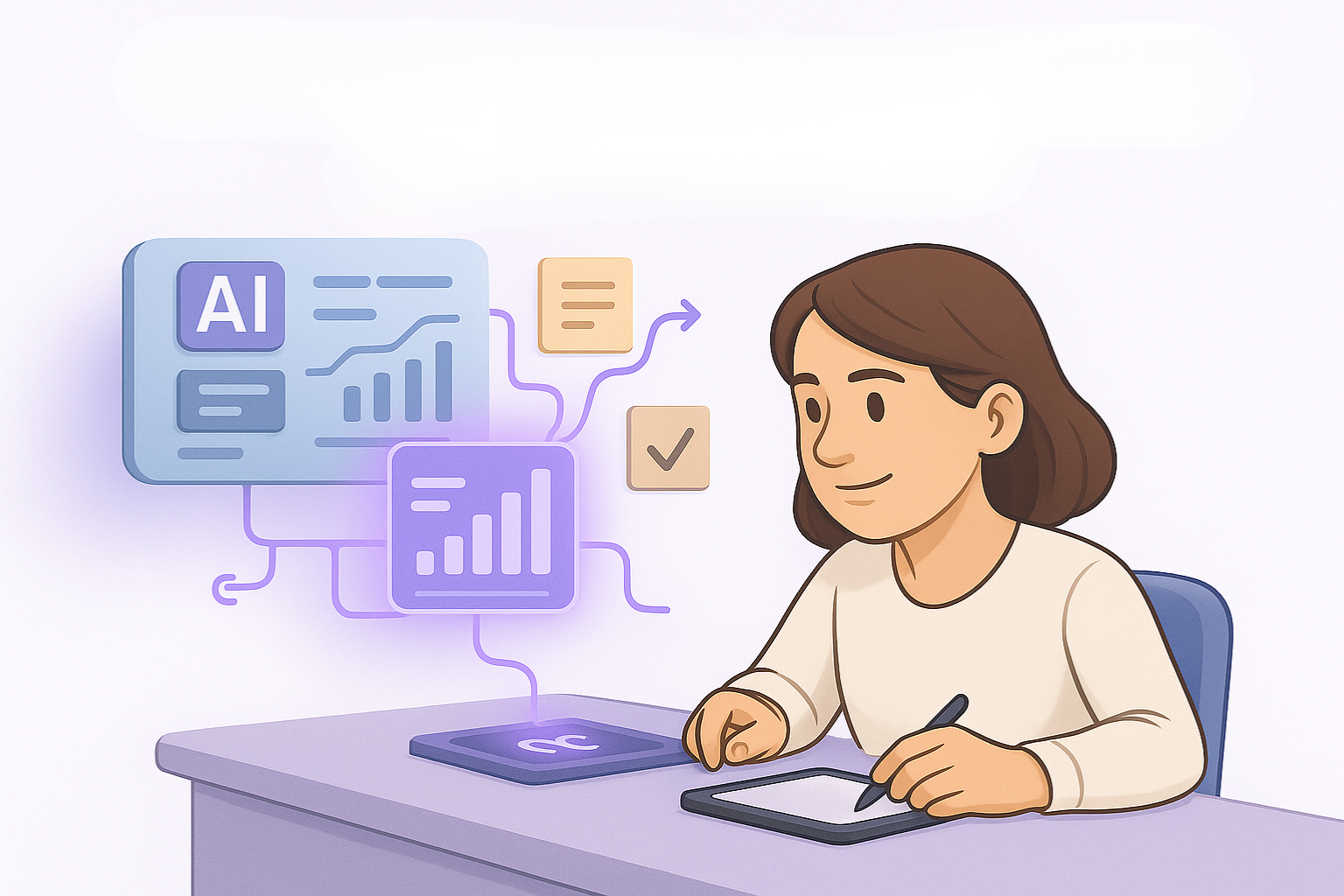
Best-in-class companies have empowered their analysts with AI tooling and training that help them be 100x more productive. The good news? Companies still need humans who understand business context and can interpret results – skills that remain uniquely human.
Paradoxically, while AI promises to elevate analysts to strategic heights, 74% of companies still struggle to achieve and scale value from AI (as per a report from McKinsey & Company). Only 48% of AI projects make it into production, and those that do take an average of 8 months to go from prototype to production, according to Gartner's 2024 survey.
But the disconnect isn't in the technology—it's in how we're implementing it. Here's the uncomfortable truth most vendors won't tell you: 70% of AI implementation challenges stem from people and process issues, not technology problems, according to BCG research.
Meet the Analyst 2.0: The AI competitor conductor
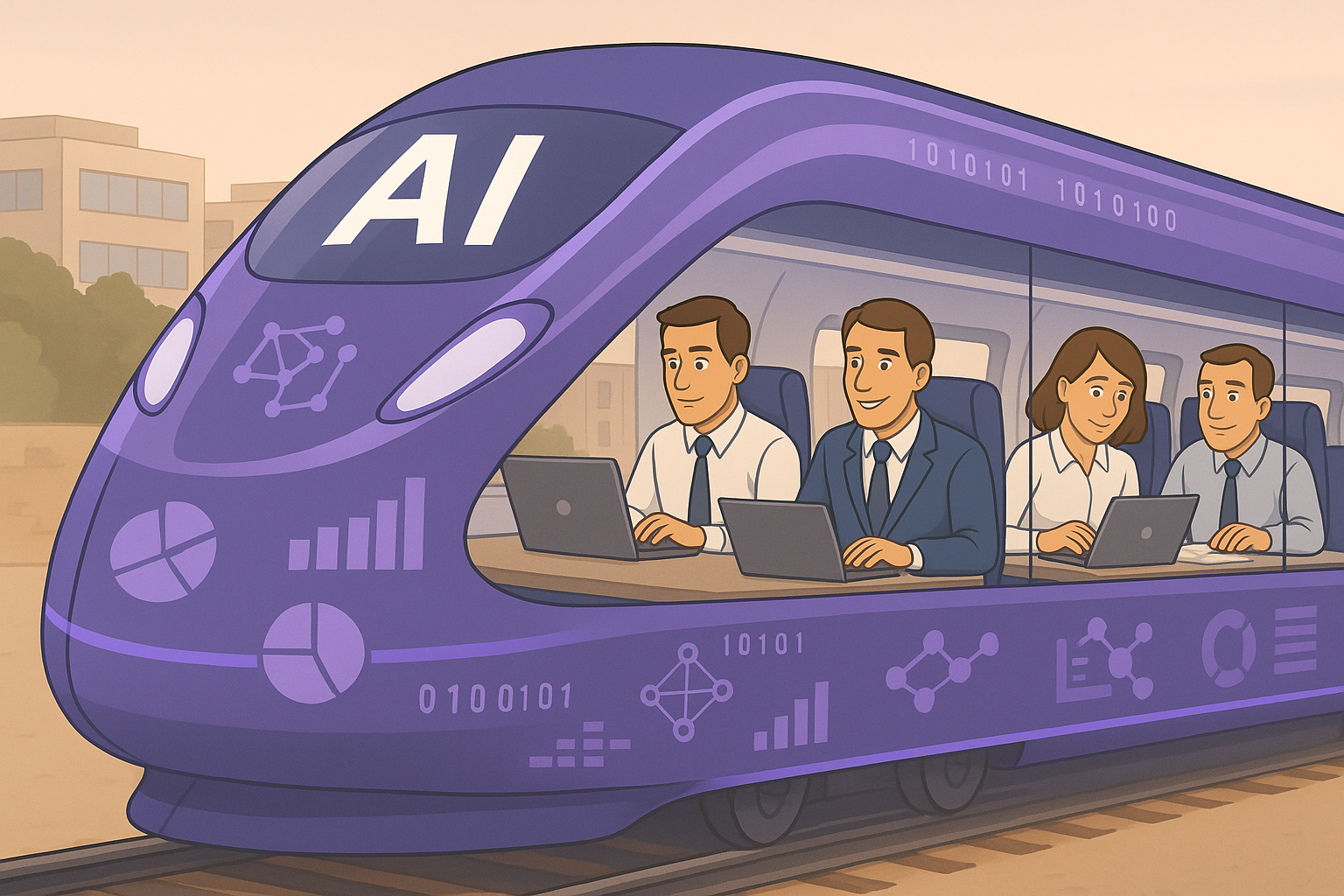
Instead of trying to compete with AI, analysts thrive in this AI era by commanding it. They've realized that the future belongs to analysts who can harmonize multiple AI tools, verify outputs, and translate technical insights into business strategy. They are investing in solutions that offer:
Intelligence & Efficiency
- Enable rapid hypothesis testing and validation
- Natural language querying without caring about grammar, structure, or typos
- Understand your data infrastructure and auto-select the right datasets
- Suggest smart questions based on patterns, your role, or previous queries
Business Integration & Action
- Translate insights into actionable workflows
- Use a unified semantic layer to align business context with data logic
- Lets you teach the system your business rules and terminology
- Scale individual analyst productivity across entire teams
- Agentic workflows that automatically trigger actions based on insights
Verification & Oversight:
- Prevent hallucinations through deterministic analysis validation
- Show the traceable logic behind every insight, all the way back to the raw table
- Automate routine tasks while maintaining human oversight
There's a running joke in analytics teams now: "There's an agent for that!". Much like the phrase "There's an app for that" defined the mobile era, today every tedious analytics task seems to have an AI agent or assistant to handle it. Need to go through millions of records for a pattern? There's an agent for that. Need to monitor KPIs overnight and get alerted of any anomalies? There's an agent for that, too.
These AI agents act as tireless sidekicks for analysts, working 24/7 in the background. They crunch the data, run analyses, generate insights – all at machine speed – and hand over the findings to their human partners for interpretation.
30/60/90 Plan to Become an AI-native Analyst
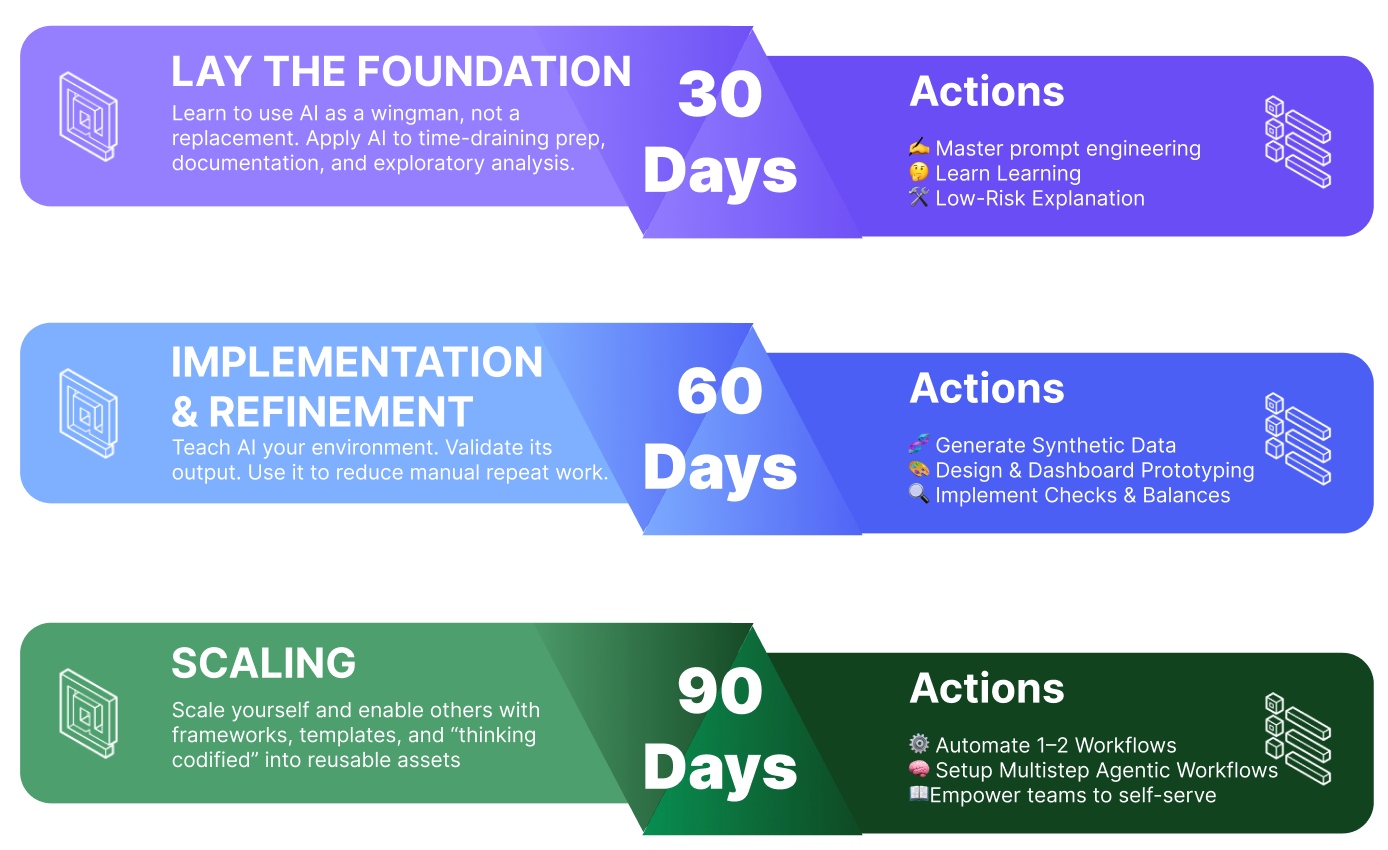
Days 1-30: Lay the Foundation
- ✍️Master prompt engineering: Prompting is the new SQL—if you can’t ask AI the right questions, you’ll never get the right insights.
- 🤔Learn Learning: Use AI to explain unfamiliar techniques, quickly upskill in new languages/libraries, refactor code you haven't touched in months, etc.
- 🛠️ Low-Risk Explanation: Reverse engineer dashboards/code/data models; Draft documentation—areas related to explanation where numerical accuracy isn’t critical
Days 31-60: Implementation & Refinement
- 🧬 Generate Synthetic Data: Use AI to generate realistic mock datasets when real data is incomplete, gated, or delayed. You define the schema; AI gives you test data.
- 🎨 Design & Dashboard Prototyping: Use AI to draft copy for KPI titles, suggest data viz pairings, and turn analysis into summaries.
- 🔍 Implement Checks & Balances: Build a QA checklist for every insight it generates. Prompt it to explain why it joined on certain keys or filtered by certain values..
Days 61-90 Days: Scaling
- ⚙️ Automate 1–2 High-Friction Workflows: Use AI to generate n8n/Python/SQL/scripts to automate manual weekly pain (e.g., combining Excel files, cleaning stale data, formatting dashboards).
- 🧠 Setup Multistep Agentic Workflows: Identify work you delay because it’s too painful (e.g., “I should rerun that quarterly segmentation”). Break it into steps where AI preps → you check/iterate → AI formats/finalizes.
- 📖Empower teams to self-serve answers & insights: Offload previous firedrills for ad-hoc answers by pointing end users to agentic analytics platforms where they can answer their own questions in natural language, powered by your curated/governed metrics and trusted insights
Tellius Agentic Analytics Platform for AI-native Analysts
Tellius Agentic Analytics platform is purpose-built for the AI-native analyst. It empowers analysts to go beyond dashboards and manual workflows by enabling natural language exploration, multi-step agentic workflows, and explainable AI-driven insights—all within a unified, business-aware environment. Instead of spending time wrangling data or waiting for reports, analysts can delegate routine tasks like data prep, anomaly detection, and summarization to AI agents, then focus their energy on interpreting results, validating logic, and guiding strategy. Tellius doesn't just automate analysis—it enhances an analyst’s ability to ask better questions, codify their thinking into reusable assets, and take action instantly. In an era where every analyst needs to be 100x faster and more strategic, Tellius is the AI-native analyst’s competitive advantage.
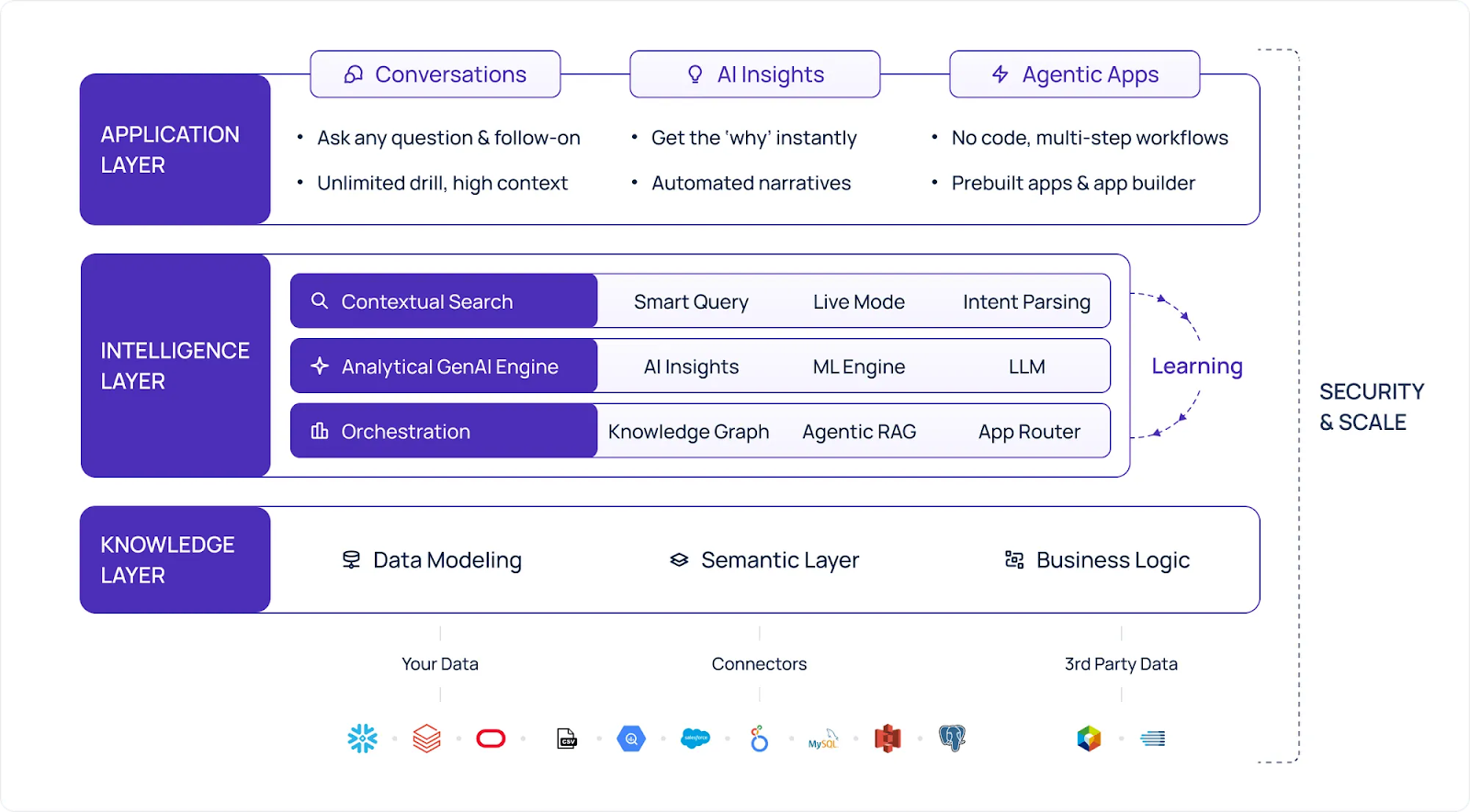
A strategic pharmaceutical analyst shared their approach: "Prescriber insights used to take weeks of data prep. Now I just ask, 'Why did new scripts fall for the brand?'. But the real value comes from the next-step workflows created around the root cause analysis."
Rise of AI-native Analysts
AI-native analysts are becoming increasingly common—a new breed of human analyst with AI seamlessly integrated into their workflow at every step. Their skill set blends statistical savvy and domain expertise with the ability to command AI-driven systems. And critically, their human judgment will be more important than ever.
So if you’re an analyst, it’s time to evolve. The age of the AI-native Analyst has arrived. For every tedious task you used to dread, just remember: there's an agent for that—and your job is to lead with the answers.
Conclusion/Recap
- AI won’t replace analysts—but analysts who use AI will replace those who don’t. Traditional analysis is being commoditized; strategic orchestration is the new value-add.
- AI-native analysts think differently. They delegate routine tasks to AI, operate in agentic workflows, and shape insight through prompt fluency, business logic, and human nuance.
- The smartest teams are investing in tools like Tellius. With agentic workflows, explainability, and action-triggering insights, platforms like Tellius power analysts to lead, not lag.
Get release updates delivered straight to your inbox.
No spam—we hate it as much as you do!

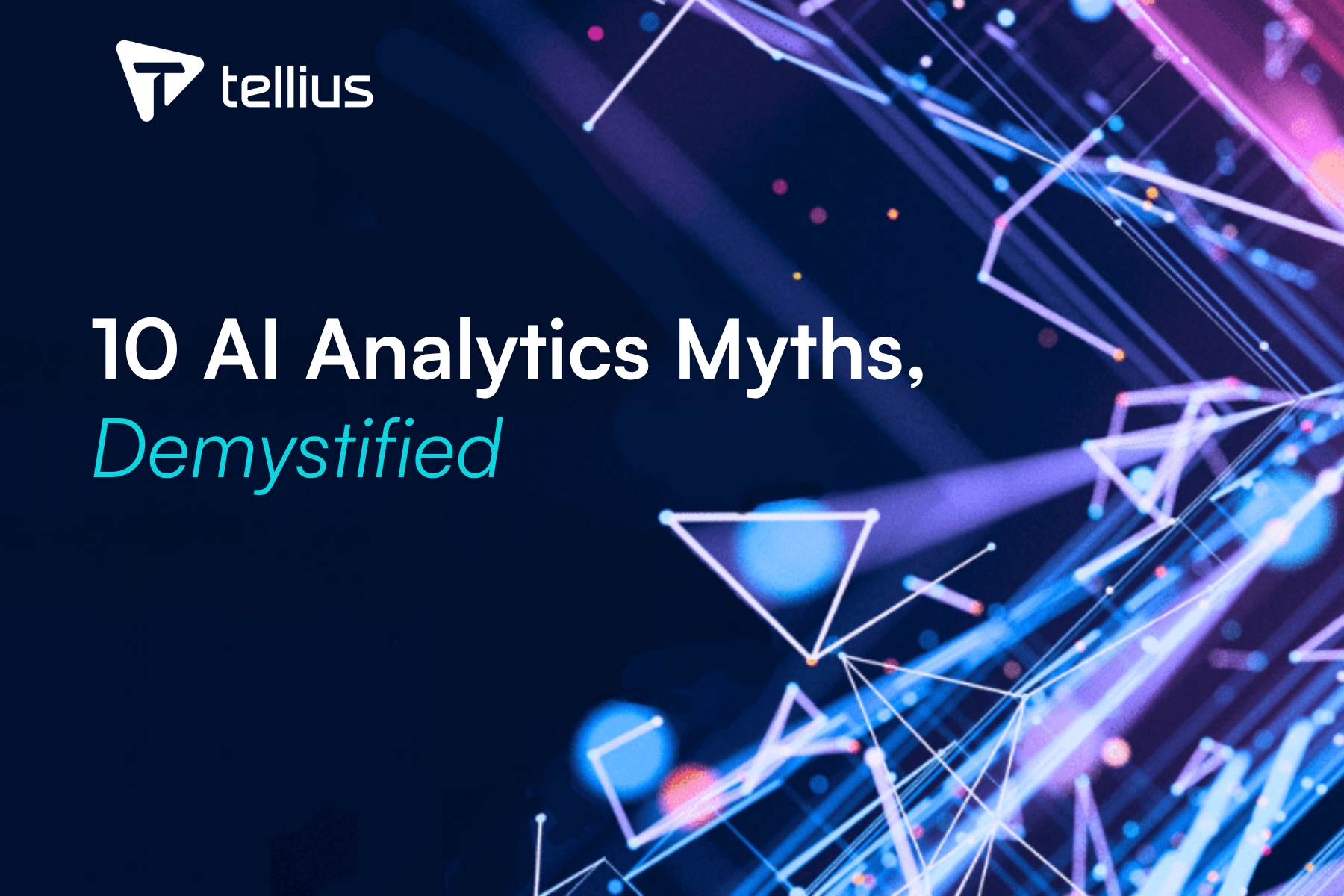
10 AI Analytics Myths, Demystified

Here's how analytics and business leaders can gain a better picture of AI’s strengths and weaknesses when it comes to analytics uses.

Making BI More Human with AI

Humans are curious, collaborative, and intelligent. Our business systems are the exact opposite — they require us to think and communicate more like a machine to get what we want. To answer the question posited earlier, this gentleman’s BI experience was likely lacking humanity.
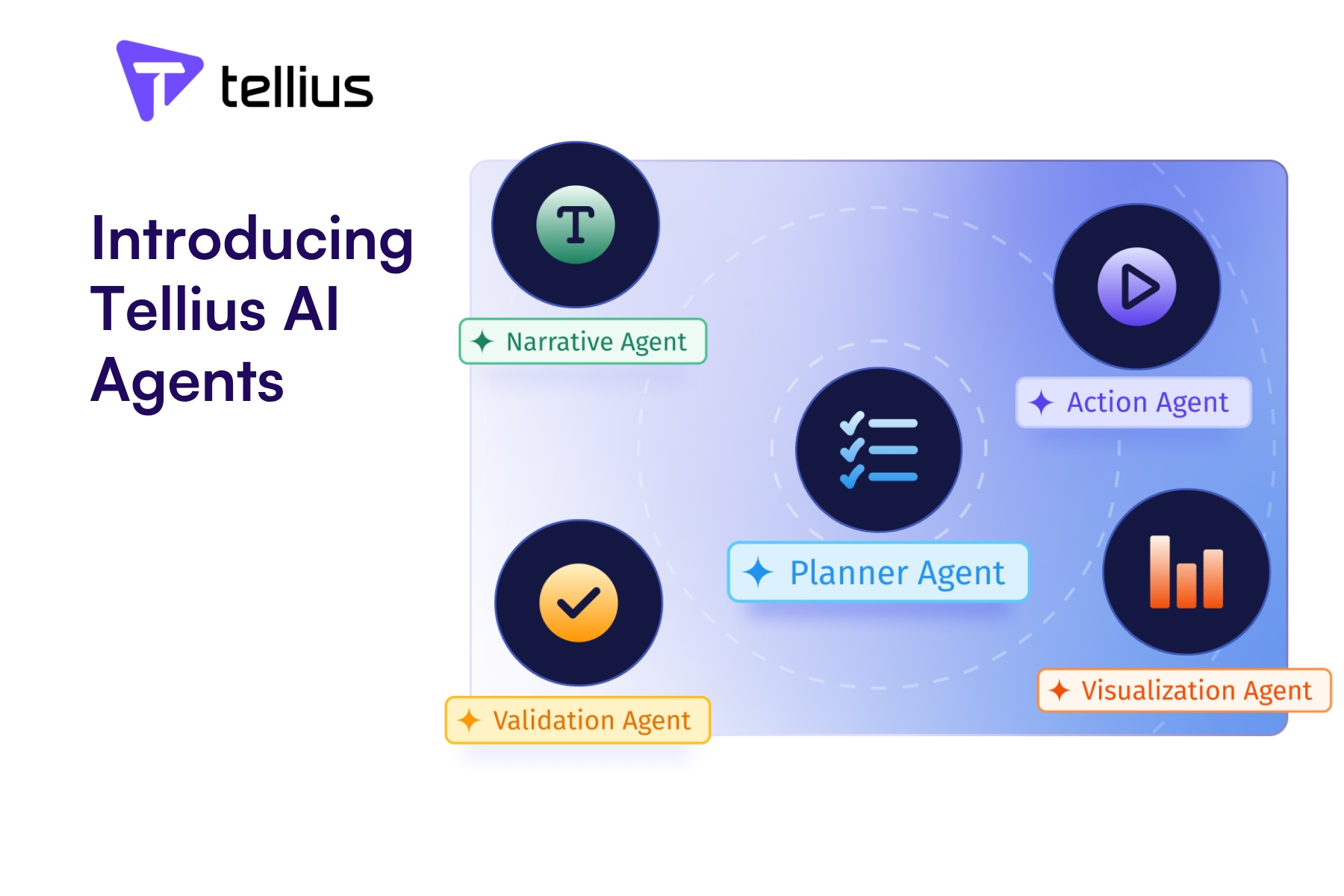
Introducing Tellius AI Agents

Tellius AI Agents and AgentComposer transform business analytics by automating complex multi-step analysis through specialized autonomous agents. Unlike generic chatbots or RPA tools, these agents leverage your enterprise data and business context to deliver deep insights across sales, marketing, finance, and manufacturing—turning questions into actions in minutes instead of days. With no-code agentic workflows, organizations can achieve 100X productivity gains and continuous, data-driven decision making.

.png)